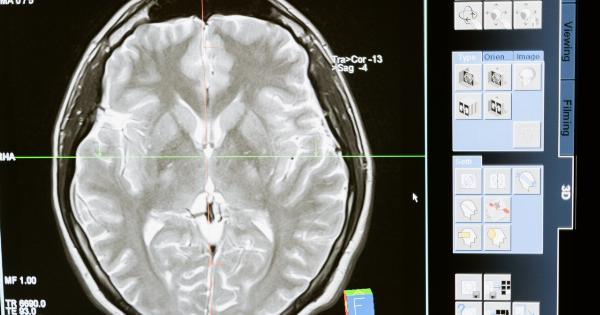Ovarian cysts are fluid-filled sacs that form on or within the ovaries, which are part of the female reproductive system.
While most ovarian cysts are harmless and often resolve on their own without causing any symptoms, sometimes they can rupture, leading to complications and potentially severe symptoms. Recognizing the signs and symptoms of an ovarian cyst rupture is crucial for prompt medical attention and appropriate treatment. In this article, we will discuss the common symptoms, causes, and diagnostic methods for ovarian cyst rupture.
Understanding Ovarian Cysts
Ovarian cysts can develop for various reasons, including hormonal imbalances during the menstrual cycle, endometriosis, and polycystic ovary syndrome (PCOS). These cysts are typically small and go unnoticed.
Women often have cysts that come and go without causing any noticeable symptoms or requiring treatment. However, in some cases, cysts can grow larger and rupture.
What is an ovarian cyst rupture?
An ovarian cyst rupture occurs when a cyst bursts or splits open. This can release the cyst’s contents, which may include fluid or blood, into the abdominal cavity.
The rupture can lead to various symptoms and complications, depending on the size of the cyst and the amount of fluid or blood released.
Signs and Symptoms of Ovarian Cyst Rupture
The symptoms of an ovarian cyst rupture can vary from mild to severe. Some common signs and symptoms include:.
1. Sudden and severe abdominal or pelvic pain:
One of the most characteristic symptoms of an ovarian cyst rupture is intense pain in the lower abdomen or pelvis. The pain may be sharp or cramp-like and can radiate to the lower back or thighs.
2. Pain during intercourse:
Some women may experience pain or discomfort during sexual intercourse. This can be a sign of an ovarian cyst rupture, especially if the pain is accompanied by other symptoms.
3. Irregular menstrual periods:
An ovarian cyst rupture can disrupt hormonal balance and affect the regularity of menstrual periods. Women may experience irregular or missed periods as a result.
4. Abnormal vaginal bleeding:
Another possible symptom of an ovarian cyst rupture is abnormal vaginal bleeding. This can include spotting between periods, heavier periods than usual, or bleeding after menopause.
5. Nausea and vomiting:
In some cases, an ovarian cyst rupture can cause nausea and vomiting. These symptoms may be accompanied by dizziness or lightheadedness.
6. Bloating and abdominal swelling:
Fluid or blood released from a ruptured cyst can cause bloating and abdominal swelling. The abdomen may feel distended and tender to touch.
7. Change in urinary or bowel habits:
A ruptured ovarian cyst can put pressure on the bladder or rectum, leading to urinary urgency, increased frequency, or changes in bowel movements.
8. Low-grade fever:
In some cases, an ovarian cyst rupture can cause a mild fever. This is often accompanied by other symptoms and may indicate an infection or inflammation.
9. Fatigue and weakness:
Experiencing fatigue and weakness can be associated with an ovarian cyst rupture. This can be due to the physical and emotional stress caused by the condition.
10. Symptoms of shock:
In rare cases, a large cyst rupture can cause symptoms of shock, such as rapid breathing, weak pulse, pale skin, and fainting. This requires immediate medical attention.
Causes of Ovarian Cyst Rupture
Ovarian cyst rupture can occur due to various reasons, including:.
1. Trauma or injury:
Physical trauma to the abdomen, such as a fall or impact, can trigger the rupture of an ovarian cyst.
2. Enlarged cyst:
Large cysts that reach a certain size are more prone to rupture. The pressure placed on the cyst walls can cause them to burst.
3. Weakening of cyst walls:
Over time, the walls of an ovarian cyst may become weakened, making them more susceptible to rupture. This can be influenced by factors like hormonal imbalances, certain medications, or underlying medical conditions.
4. Hormonal changes:
Changes in hormonal levels during the menstrual cycle or hormonal disorders can contribute to the development and rupture of ovarian cysts.
Diagnosing Ovarian Cyst Rupture
If a ruptured ovarian cyst is suspected, a healthcare provider may perform various tests and examinations to confirm the diagnosis and assess the severity of the condition. These may include:.
1. Pelvic examination:
A pelvic exam allows the healthcare provider to physically examine the reproductive organs and check for signs of tenderness, swelling, or abnormal masses.
2. Imaging tests:
Ultrasound, CT scan, or MRI imaging may be done to visualize the ovaries and the presence of any cysts or fluid in the abdominal cavity.
3. Blood tests:
Blood tests can help assess hormonal levels and rule out other possible causes of symptoms, such as infection or inflammation.
4. Laparoscopy:
In some cases, a laparoscopy may be performed to directly visualize the ovaries and assess the extent of the rupture. This is a minimally invasive surgical procedure.
Treatment for Ovarian Cyst Rupture
The appropriate treatment for ovarian cyst rupture depends on the severity of symptoms and potential complications. In mild cases, conservative management may be sufficient, including pain medication, rest, and monitoring of symptoms.
However, more severe cases may require additional interventions, such as:.
1. Surgical intervention:
If the cyst rupture leads to significant internal bleeding or tissue damage, a surgical procedure may be necessary to remove the cyst and repair any affected areas.
2. Hormonal therapy:
Hormonal medications, such as birth control pills, may be prescribed to regulate hormonal levels and prevent the formation of new cysts.
3. Pain management:
Pain medications, both over-the-counter and prescription, can help alleviate the discomfort associated with an ovarian cyst rupture. Your healthcare provider will recommend the most suitable option based on your specific situation.
4. Antibiotics:
If an infection is suspected or identified, antibiotics may be prescribed to eliminate the infection and prevent further complications.
Preventing Ovarian Cyst Rupture
While it’s not always possible to prevent ovarian cysts from developing or rupturing, certain measures can help minimize the risk:.
1. Regular check-ups:
Attend routine gynecological check-ups to detect any abnormalities or cysts early on.
2. Hormonal regulation:
If you have hormonal imbalances or conditions like PCOS, work with your healthcare provider to regulate your hormones and manage your condition effectively.
3. Avoiding trauma:
Take precautions to minimize the risk of abdominal injuries, such as wearing seat belts in the car and practicing safe physical activities.
4. Birth control pills:
For some women, taking birth control pills can reduce the risk of developing cysts and may help regulate the hormonal fluctuations that can lead to cyst formation.
Conclusion
Ovarian cysts are a common occurrence in women, but their rupture can cause significant discomfort and potential complications.
Recognizing the signs and symptoms of an ovarian cyst rupture is essential for timely medical intervention and appropriate treatment. If you experience sudden and severe abdominal pain, changes in menstrual patterns, or other symptoms associated with ovarian cyst rupture, it is vital to seek medical attention.
Early diagnosis and treatment can help avoid potential complications and contribute to your overall well-being.





























